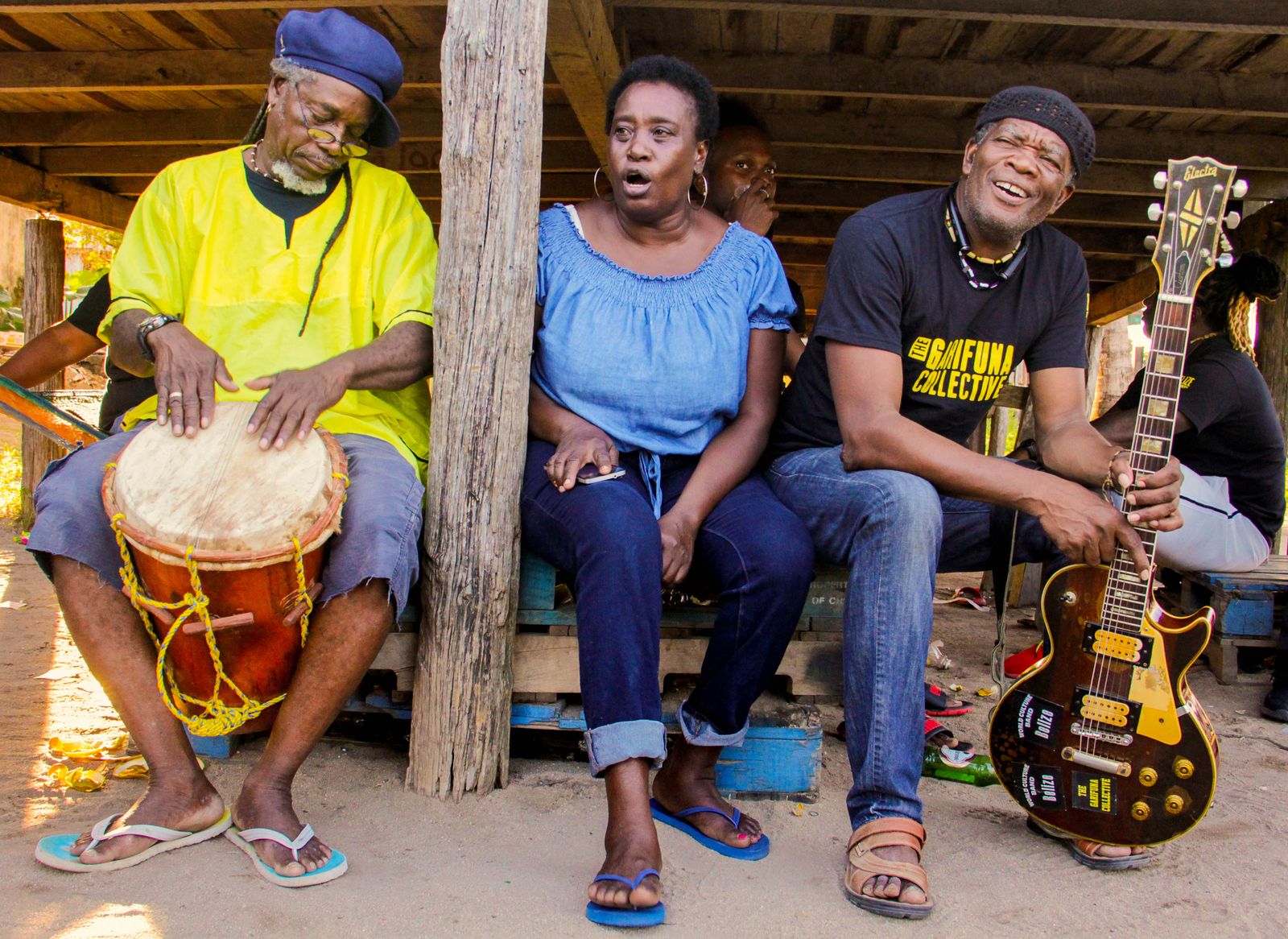Garifuna
Dangriga, Belize
Described by BBC Music as “full of surging seaside rhythms and yearning, soulful melodies that hang in the memory,” the music of the Garifuna Collective is both undeniably danceable and profound. It speaks to universal human emotions through the unique valence of their resilient community and the story of their prolonged and forced migration from Africa to the shores of present-day Central America.
Garifuna culture reflects the history of the Garifuna people (also known as the Garinagu), a culturally threatened African Amerindian ethnic minority living primarily along the Caribbean coasts of Belize, Honduras, Guatemala, and Nicaragua. Their ancestors were West Africans who landed on the island of St. Vincent as early as 1635 (some sources say 1675) after the wreck of a slave ship. They intermarried with local Carib and Arawak peoples, forming a free society of Afro-Indigenous people who successfully resisted colonial rule for more than a century before being deported from the island to mainland Central America by the British. Garifuna music differs significantly from that of the rest of Central America, with a dense percussive range reflecting West African traditions, and emphasis on vocal artistry and soulful melodies derived from its Arawak and Carib heritage. Modern Garifuna includes both unique traditional hand drums, turtle shells, and jawbones, as well as modern rock instruments. In 2001 UNESCO proclaimed the language, dance, and music of the Garifuna as a Masterpiece of the Oral and Intangible Heritage of Humanity.
The seed for the Garifuna Collective was planted in the early 1980s when the group’s founder, Andy Palacio, was a young schoolteacher working on a literacy campaign in Nicaragua. After meeting one of the last, elderly speakers of Garifuna in that country, he worried that this loss of culture foreshadowed what might happen in his native Belize, where the economics of coastal development only add to the assimilationist pressures threatening Garifuna culture. On his return to Belize, Palacio began a heralded career dedicated to preserving Garifuna culture through music, eventually working with the producer Ivan Duran to assemble an intergenerational group of traditional musicians who became the Garifuna Collective. NPR’s All Music Considered declared, “Their 2007 [debut] album Wátina became an instant classic, and probably did more than anything else to bring this culture and language to an international audience.”
After Palacio’s sudden death in 2008, the band forged a new path to carry on his legacy. As Duran notes, “One of the decisions we had to make is that we’ll never have a front man again. That’s Andy’s spot, and he will never be replaced…. In order to do that, we had to learn, grow, and transform. Now, it feels like the whole village is singing. That’s beautiful, because it’s a true reflection of what music means in the Garifuna community and how songs are made. It’s always a collective effort.” Today the group includes master musicians from Garifuna communities across Belize, ranging in age from 22 to 65. At home, each works full time as a musician, leading their own bands that reflect the many strands of contemporary Garifuna culture, but in their work together they carry the joyful music and spiritual message of their heritage to audiences around the world.


